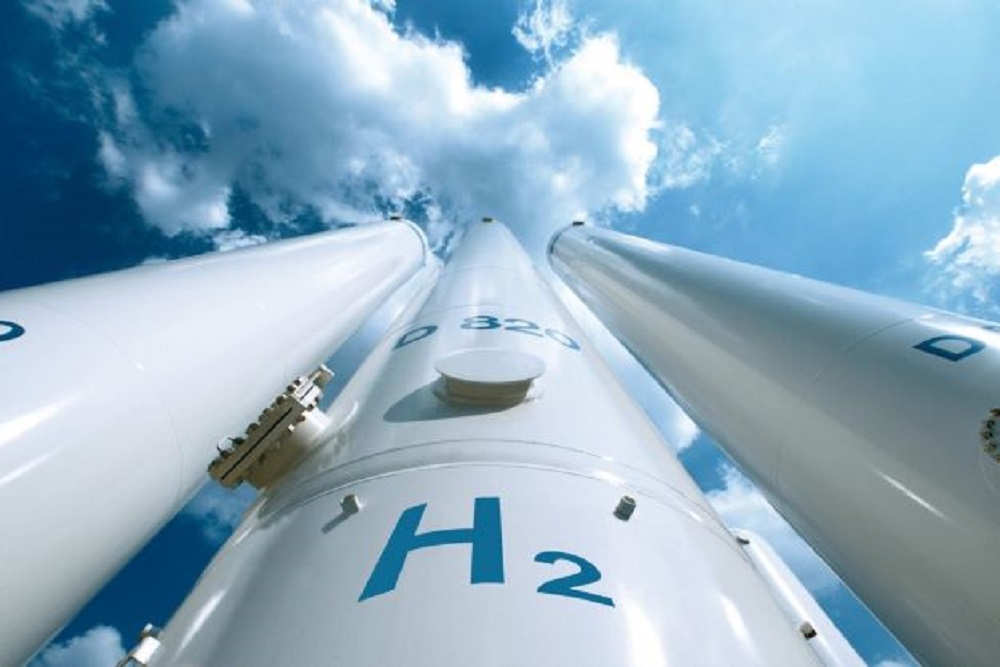The green hydrogen industry in the U.S. saw some strong policy support and a flurry of project announcements this year, as policy-makers and the energy industry eye the resource’s potential to provide long-duration energy storage to the power grid, as well as help decarbonize industries that would otherwise be hard to tackle.
A June report from the Deloitte Center for Sustainable Progress, which looked at the potential of green hydrogen to meet the demands of heavy industry, identified global market milestones of $642 billion by 2030, $980 billion by 2040, and $1.4 trillion by 2050.
Policy support for clean hydrogen
2023 saw a lot of federal policy support for clean hydrogen technologies. In June, the Biden-Harris Administration put out a national clean hydrogen strategy and roadmap, outlining opportunities for the U.S. to domestically produce 10 million metric tonnes (MMT) of clean hydrogen annually by the end of the decade, 20 MMT annually by 2040, and 50 MMT annually by 2050.
The administration also created an inter-agency hydrogen task force – co-chaired by Mary Frances Repko, White House deputy national climate advisor, and David Turk, deputy secretary of the U.S. Department of Energy (DOE) – to deploy a more holistic, “whole of government approach” to clean hydrogen across the administration.
And in October, the DOE announced funding of $7 billion to launch seven regional clean hydrogen hubs around the country, each aimed at more broadly supporting the commercial-scale deployment of the resource. The funding for the hubs comes from the 2021 Bipartisan Infrastructure Law. All seven hubs are estimated to produce a joint three million metric tons of hydrogen each year, and slash 25 million metric tons of carbon dioxide emissions every year.
Plans for hydrogen projects
This year also saw some interesting hydrogen project announcements. In October, for instance, Duke Energy announced plans to break ground on the first U.S. demonstration project with an end-to-end green hydrogen production, storage and combustion system, located at its 74.5 MW DeBary solar plant in Florida. The facility – expected to be operational in 2024 – will pull energy from the solar plant and run it through two 1 MW electrolyzer systems to produce hydrogen, which will then be stored until needed. At that time, the hydrogen will be passed through a combustion turbine to create electricity.
Hydrogen company H2B2 Electrolysis Technologies, meanwhile, is working on its Fresno, California-based SoHyCal project. The project is currently in its first phase, producing up to a ton of hydrogen every day using biogas. In its second phase – expected to begin in the second quarter of 2024 – it will begin using solar energy from a nearby photovoltaic plant, as well as biogas, and ramp up production to up to three tons of hydrogen per day.
Ramping up electrolyzer manufacturing capacity
Another focus for the industry this year has been ramping up the manufacturing capacity of electrolyzers, an essential component to producing hydrogen from renewable energy. Experts say most electrolyzer production is currently outsourced to overseas manufacturers, and one of the chief challenges to ramping up domestic manufacturing capacity is accessing capital to build the necessary infrastructure.
However, some companies are looking to change this dynamic. Verdagy, for instance, announced in September that it is opening a new facility to manufacture advanced water electrolyzers in large volumes in Newark, California. The new plant is slated to begin operations in the first quarter of 2024.
And Electric Hydrogen – which manufactures 100 MW electrolyzer systems that can each produce nearly 50 tons of green hydrogen daily – completed an oversubscribed $380 million Series C financing this year, bringing the total funding it has raised since its launch three years ago to $600 million.
Cost and scaling obstacles
But the hydrogen industry still has a way to go. Some analysts, for instance, have raised concerns that the Biden-Harris Administration’s ambitious clean hydrogen goals will require addressing some cost and scaling obstacles.
Hydrogen produced from fossil fuels currently costs around half of what clean hydrogen does – between $1/kg and $2/kg, compared to $3/kg to $6/kg – and the industry is likely to need continued financing, including through subsidies, to scale up significantly, some say.
Some environmental stakeholders, meanwhile, continue to raise concerns about hydrogen’s role in the clean energy transition. This summer, for instance, a coalition of more than 180 organizations – including conservation, social justice and Indigenous groups – penned a letter to the Biden administration urging it to reject the applications for regional clean hydrogen hubs.
The groups noted that some 95% of hydrogen produced currently is derived from fossil fuels, and contended that hydrogen infrastructure build-out could lead to additional greenhouse gas emissions, as well as pollution.
This content is protected by copyright and may not be reused. If you want to cooperate with us and would like to reuse some of our content, please contact: editors@pv-magazine.com.








By submitting this form you agree to pv magazine using your data for the purposes of publishing your comment.
Your personal data will only be disclosed or otherwise transmitted to third parties for the purposes of spam filtering or if this is necessary for technical maintenance of the website. Any other transfer to third parties will not take place unless this is justified on the basis of applicable data protection regulations or if pv magazine is legally obliged to do so.
You may revoke this consent at any time with effect for the future, in which case your personal data will be deleted immediately. Otherwise, your data will be deleted if pv magazine has processed your request or the purpose of data storage is fulfilled.
Further information on data privacy can be found in our Data Protection Policy.